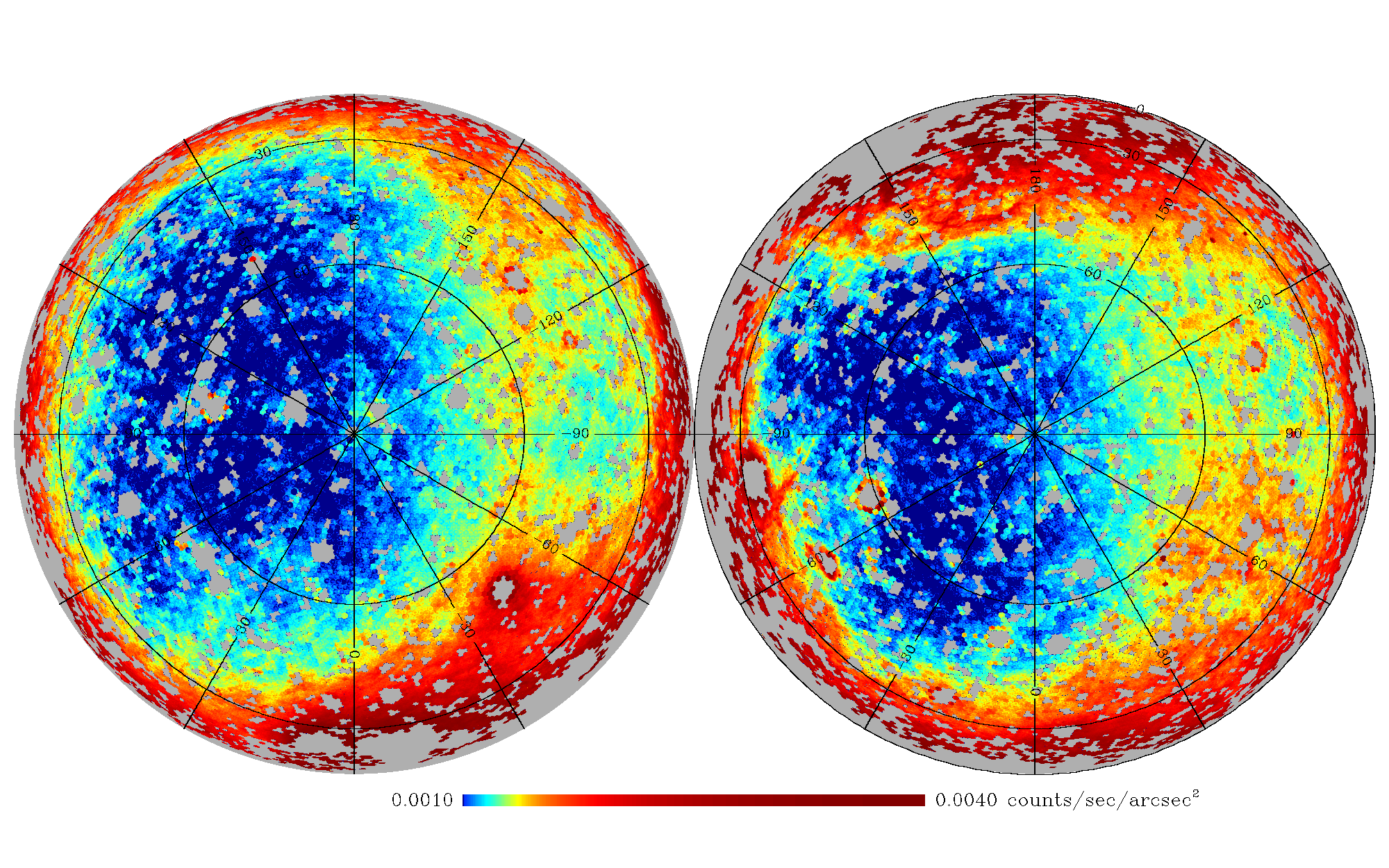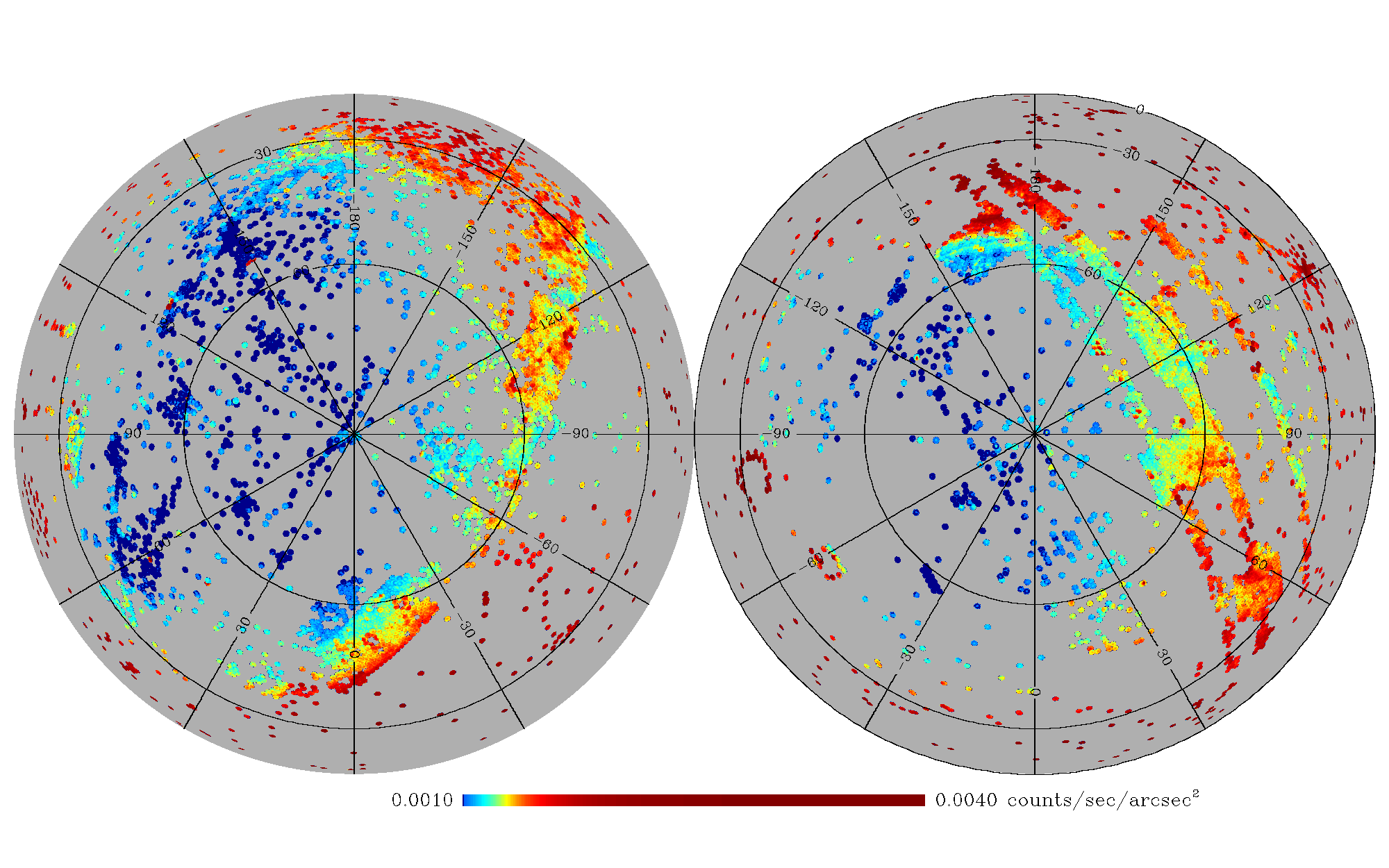|
|||||||||||||||||||
|
|
|||||||||||||||||||
Service Outage
On Saturday, July 27, from 11:00 to 21:00 UTC (7 am to 5 pm US Eastern Time), all MAST services will be unavailable due to maintenance.
| GCAT Home |
Catalog Creation |
Kepler GCAT Differences |
Data Access and Products |
SQL CasJobs Access and Examples |
GALEX Unique Source Catalogs (Seibert et al.)
Relationship To Other GALEX Unique Source Catalogs
This catalog is distinct from the GUVCat HLSP. Compared to GCAT, GUVCat includes tiles released as part of the final GALEX data release (GR7) and thus uses the most amount of available AIS tiles between the other unique source catalogs.

Introduction
GALEX has been undertaking a number of surveys covering large areas of sky at a variety of depths. However, making use of this large data set can be difficult because the standard GALEX database contains all of the detected sources, which include many duplicate observations of the same sources, as well as numerous spurious low signal-to-noise sources. At the same time, the sky footprint associated with GALEX observations has not been well defined or presented in an easily usable format.
In order to remedy these problems, Seibert et al. have constructed three catalogs of GALEX measurements; namely the GALEX All-Sky Survey Source Catalog (GASC), the GALEX Medium Imaging Survey Catalog (GMSC), and the Kepler GCAT. Our intention is that these catalogs will provide the primary reference catalog useful for matching GALEX measurements with other large surveys of the sky at other wavelengths. Covering a total of 26,300 deg2 of sky, the GASC consists of all GALEX observations with exposure times below 800 sec and reaches a depth of NUV 21 (AB mag). The GMSC covers a smaller region of 5000 deg2 with exposure times between 800 and 10,000 sec and reaches a depth of NUV 23 mag. There are a total of 40 million unique sources in the GASC and 22 million in the GMSC. Each catalog is accompanied by exposure time, coverage and flag maps in FITS and Healpix formats.
These catalogs do not contain the deepest images available for the GALEX deep fields. While the sky covered by these tiles is included, we have limited the total exposure time to 10,000 sec. Crowding becomes a significant issue beyond these depths, and thus requires more careful treatment than what is possible using the standard GALEX pipeline source detection. Users interested in these regions can find the deepest co-adds from the MAST archive and complete their own an analysis. Both the GASC and GMSC catalogs only include GALEX data up to the GR6 data release. A separate catalog, the "Kepler GCAT", was constructed using very similar methods, and includes data up through GR7, but only for the area of sky within and near the Kepler field.
Please use the links below to find additional information on the creation of the catalogs, the available data products, how to access the data, and powerful ways to interact with the catalogs on our CasJobs website.
| Visit this page to learn about the creation of the source catalogs, including source selection, the meaning of flag values, and details on the several different kinds of healpix maps available. |
| GASC and GMSC - GALEX All-Sky-Survey and Medium-Sky-Survey Catalogs (through GR6) |
| Visit this page to learn about the small, but important, differences between the Kepler GCAT and the GASC/GMSC. |
| Kepler GCAT - A GALEX Source Catalog in the Kepler Field (through GR7) |
| Visit this page to learn about the available data products, where they are located within MAST, how to manually download the catalog and healpix FITS files, and descriptions of the source catalog columns. |
| Data Products, Data Access, and Catalog Column Descriptions |
| Visit this page to learn how to interact with the catalogs though MAST's CasJobs pages using powerful SQL queries. |
| Catalog Access Through CasJobs |
Back To Top
|
|
|




 Follow Us
Follow Us